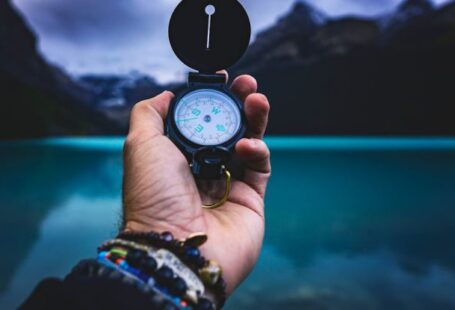Navigating through unknown terrain can be a daunting task, especially when your survival depends on your ability to find your way. In such situations, having essential survival navigation skills can mean the difference between life and death. Whether you are venturing into the wilderness for a hike, camping trip, or any other outdoor adventure, knowing how to navigate without relying on technology is crucial. Let’s explore the key skills you need to navigate successfully in the wild.
Understanding Maps and Compass
Maps and compasses are two of the most fundamental tools for navigation in any outdoor setting. A map provides you with a bird’s eye view of the area, allowing you to plan your route, identify landmarks, and estimate distances. On the other hand, a compass helps you determine your direction and maintain a consistent heading. Understanding how to read a map, including symbols, contour lines, and scale, is essential for effective navigation. Similarly, knowing how to use a compass to orient yourself and follow a bearing will help you stay on course even in challenging conditions.
Navigating by the Sun, Moon, and Stars
In situations where you might not have access to a map and compass, being able to navigate using celestial bodies can be a lifesaver. The sun, moon, and stars provide valuable directional cues that can help you determine which way is north, south, east, or west. For instance, the sun rises in the east and sets in the west, which can guide you during the day. At night, identifying prominent constellations or using the North Star (Polaris) as a reference point can help you navigate in the absence of other tools.
Recognizing Natural Signs and Landmarks
Nature itself offers numerous clues that can aid in navigation if you know what to look for. Paying attention to natural signs such as the direction of prevailing winds, patterns of vegetation, and the flow of water can help you orient yourself and make informed decisions about which way to go. Landmarks, both natural and man-made, serve as reference points that can be used to track your movement and confirm your location. Being able to recognize and interpret these signs can significantly enhance your navigation skills in the wild.
Estimating Distance and Time Travel
In a survival situation, accurately estimating the distance you have traveled and the time it took can be critical for planning your next steps. By pacing out your steps or using other methods to gauge distance, you can create a mental map of the terrain and track your progress more effectively. Similarly, having a sense of how long it typically takes to cover a certain distance on different types of terrain can help you plan your movements and avoid getting lost or stranded.
Navigating in Challenging Conditions
Survival situations often present challenges such as poor visibility, inclement weather, or unfamiliar terrain, which can make navigation more difficult. In such circumstances, having the ability to adapt your navigation techniques and rely on multiple methods can be crucial. For example, using terrain association to navigate based on physical features like hills, rivers, or valleys can help you stay on course even when visibility is limited. Additionally, knowing how to account for deviations caused by factors like wind or slope can help you make more accurate navigational decisions.
Staying Calm and Focused
In any survival scenario, maintaining a calm and focused mindset is essential for effective navigation. Panic and anxiety can cloud your judgment and lead to poor decision-making, increasing the risk of getting lost or disoriented. By staying calm, assessing your situation rationally, and applying your navigation skills methodically, you can navigate through challenging circumstances with greater confidence and success.
Enhancing Your Navigation Skills
Like any other skill, navigation proficiency improves with practice and experience. Regularly honing your map-reading, compass work, and natural navigation abilities through outdoor activities and training exercises can help you become a more confident and competent navigator. Seeking guidance from experienced outdoor enthusiasts or enrolling in navigation courses can also provide valuable insights and techniques to further enhance your survival navigation skills.
Incorporating Technology as a Backup
While traditional navigation methods are essential for survival scenarios, modern technology can serve as a valuable backup in certain situations. GPS devices, smartphones with mapping apps, and personal locator beacons can provide additional navigational support and help rescuers locate you in emergencies. However, it is crucial to remember that technology can fail or be unavailable in remote areas, making traditional navigation skills indispensable for true self-reliance in the wild.
Conclusion: Navigating the Wild with Confidence
Mastering essential survival navigation skills is not just about finding your way from point A to point B; it is about equipping yourself with the knowledge and confidence to navigate through challenging environments and unforeseen circumstances. By understanding maps and compasses, utilizing natural signs and celestial cues, estimating distance and time travel, and staying calm under pressure, you can navigate the wild with confidence and increase your chances of survival. Remember, practice, adaptability, and a keen awareness of your surroundings are key to becoming a proficient wilderness navigator. Whether you are a seasoned outdoor enthusiast or a novice adventurer, honing your navigation skills is a vital step towards ensuring your safety and success in the great outdoors.





